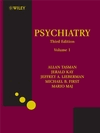Antipsychotic Drugs
Summary
Dramatic growth of research in the area of pharmacotherapy for psychotic disorders has advanced our understanding of the neurobiology of these illnesses and of the medications used to treat them. The advent of second-generation antipsychotics (SGAs) represents an incremental advance in the treatment of psychosis, and in many parts of the world SGAs have largely replaced first-generation antipsychotics (FGAs) as the first-choice agents for acute and maintenance therapy for psychotic illnesses. Results of a number of randomized, controlled trials suggest that SGAs may offer some advantages over FGAs, such as fewer acute extrapyramidal effects; less tardive dyskinesia; and possibly improvement in negative, affective, and cognitive symptoms. SGAs are also being used increasingly for various nonpsychotic conditions, with or without empirical support, as happened with FGAs. SGAs, however, have their own limitations and side effect profiles. Moreover, recent meta-analyses and large-scale practical clinical trials have provided conflicting information about the superiority of SGAs. In light of often contradictory evidence regarding cost-effectiveness, therapeutic effect sizes, and metabolic consequences of SGAs, the risk–benefit calculus for the two generations of antipsychotics remains unclear. This chapter presents an updated review of the history, pharmacology, uses, efficacy, and side effects of antipsychotic drugs on the basis of currently available evidence, and discusses the benefits and limitations of SGAs in the management of psychosis and other disorders.



